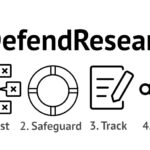Lewis Joel Greene was born on August 10, 1934, in New York City, United States. He graduated Bachelor with emphasis in Chemistry at the Amherst College (1955), and did a doctorate in Biochemistry and Cell Biology at the Rockefeller University (1962). After his doctorate, he worked for 12 years as a researcher in the Department of Biology at the Brookhaven National Laboratory. In 1968, he received a Fulbright Fellowship to visit the Department of Pharmacology, Faculdade de Medicina de Ribeirão Preto, Universidade de São Paulo (FMRP-USP) as a guest professor invited by Professor Mauricio Rocha e Silva. This experience was decisive for Greene and his family to decide to live in Brazil. In 1974, he was hired by the same University where, from 2000, he served as professor of Cell and Molecular Biology until his mandatory retirement in 2004. He was Coordinator of the Protein Chemistry Centre at FMRP from 1975 to 2004. In 1980, Eduardo M. Krieger, Sergio H. Ferreira and Greene took responsibility for editing the Brazilian Journal of Medical and Biological Research, published 100% in English, representing five Brazilian Biomedical Societies. In 1985, he co-founded and chaired the Brazilian Association of Science Editors (ABEC), an organization that remains to this day and represents scientific editors in Brazil. He received several honors, but his most significant occurred in 1997, when he was elected Member of the Brazilian Academy of Sciences and in 2002, when he was inducted into the Order of the Brazilian Scientific Merit. He continues to work in his research group, acting as head of the Protein Chemistry Center of the Blood Center of Ribeirão Preto. He also published 130 papers in scientific journals, which received more than 3000 citations in international journals, 304 abstracts at conferences and 131 papers presented at events. He supervised 26 Master’s students and 30 Doctoral students, has participated in 266 health and scientific events and organized other 17 events. Elected by his peers he was member of SciELO Scientific Committee for seven years. It is believed that he is the scientific editor that remains the most time in this function in Brazil; it has been over 30 years in charge of the Brazilian Journal of Medical and Biological Research. This is a brief summary of the previous life of Dr. Greene and his experience as editor will be shared through the following answers.
1. How to form an editor of a scientific journal?
I don’t think editors of scientific journals are formed, but rather happen. I think finding enjoyment in science, having curiosity about science, being an effective producer of science and an expert in one or more areas are the characteristics of most of the good editors I have met. In 2006, I gave a lecture to about 400 young aspiring editors in Asia and I had the feeling I was talking to a class of accountants.
2. What are the functions of scientific journals in Brazil?
The most visible function of scientific journals is to publish papers which communicate Brazilian science to the rest of the world. Because of the nature of the peer review process, journals also can create criteria for carrying out science and the publication of science. This teaching role is more effectively done by journals which are edited by scientific societies because they operate at the national level. A journal can also promote local scientific areas by publishing symposia.
3. What is the ideal flowchart for a scientific journal?
I do not think there is an ideal flowchart for a scientific journal because the objectives of journals, as well as the local conditions, can be very different.
4. Can a professional and effective participation of an international editor be of importance to journals of Brazil?
I don’t know. The answer would depend on the specific international editor and the specific journal. The fact that an editor is international does not guarantee success. This is the attitude of a colonized people.
5. How do you see the evolution of public policies of support to journals?
The evolution of public policies of support to journals has been positive with national agencies such as FINEP, CNPq and CAPES providing funds. Indeed the most important governmental contribution was to support SciELO, which started as a project of FAPESP and BIREME which made papers published in Brazilian journals available free to everyone in the world.
6. The BJMBR was a pioneer in adopting APC as a form of financing. How was this process? Should it be extended to other national journals?
I think it could be extended to all national journals providing they have high quality and satisfy other SciELO criteria. However, there is a new trend in journal publishing which is becoming more and more common these days. The idea is that the authors, using money from the funding agencies, pay a publication charge of US$ 500 to 3000/paper. For some journals this could be their only source of revenue. This will create a new kind of competition amongst Brazilian and international scientific journals.
7. The Impact Factor of BJMBR has remained for years a little more than 1. Why doesn’t the BJMBR progress further in the impact factor?
The impact factor of a journal is a measure of the total number of citations to papers published within two years of publication (ISI). I think the impact factor of the BJMBR is appropriate. There are some other considerations that contribute to the perceived quality of the papers that are submitted to the Journal. 1) The word “Brazilian” in the title; 2) It is a general journal, so the frequency of repeat paper from the same laboratory is low; 3) the fact that the impact factor is near 1 also sometimes contributes to a lower quality of the papers submitted. The major problem with the impact factor is not in the concept but in the way it has been used. It is incorrect to use impact factors to evaluate the science of individuals, departments, institutions and universities.
8. Has ABEC developed a positive role in Brazilian scientific publishing?
Yes, but I think ABEC should dedicate more meetings and congresses to the larger question facing journal publication and, importantly, should devote more time to these larger questions. A three-hour symposium is not enough time to explore a subject and to reach a thoughtful conclusion.
9. Over the last few decades, one has been “dividing to conquer”. Today we have hundreds of nationally published journals competing eventually for the same niche. To which extent is this healthy and how to improve the system?
I think the competition amongst the journals is healthy, provided it is fair. We have some journals that exist only because a department chairman or director of a school wants them to continue.
10. Has the program Qualis of CAPES had any influence on the quality of Brazilian scientific journals?
This is difficult to answer because I disagree with many of the positions taken by Qualis and CAPES in the last years. However, I think that the Portal of CAPES is one of the most important contributions to all Brazilian science, not only postgraduate studies. On the other hand, the emphasis on productivity (number of papers published), use of impact factor to classify PG areas and the absence of methods to evaluate PG students in terms of basic tools which they must learn, are some of the major deficiencies of the present program.
11. Addressing the internationalization of scientific production, Capes is reviewing proposals for joining international publishers in order to edit outstanding Brazilian journals. In your opinion, what are the advantages and disadvantages of this proposal?
The Brazilian Journal of Medical and Biological Research (BJMBR) has been invited to join an international publisher to share the production and distribution of the Journal. The selection of papers was to be the responsibility of the Brazilian Editors (advantage) who would receive a stipend from the publisher (disadvantage). The production of the print and electronic versions was to be the responsibility of the publisher (advantage), as was the posting on open access sites of the publishers (disadvantage). The choice of the open access sites (disadvantage), as well as the definition (disadvantage) and collection (disadvantage) of the publication charge were to be the responsibility of the publisher. The BJMBR would be included in the advertising program of the publisher (advantage). The BJMBR rejected this invitation because the disadvantages outweighed the advantages. I personally think that this initiative is not in the interest of Brazilian journals and reflects the attitude of a “colonized” people.
Como citar este post [ISO 690/2010]:


















Recent Comments